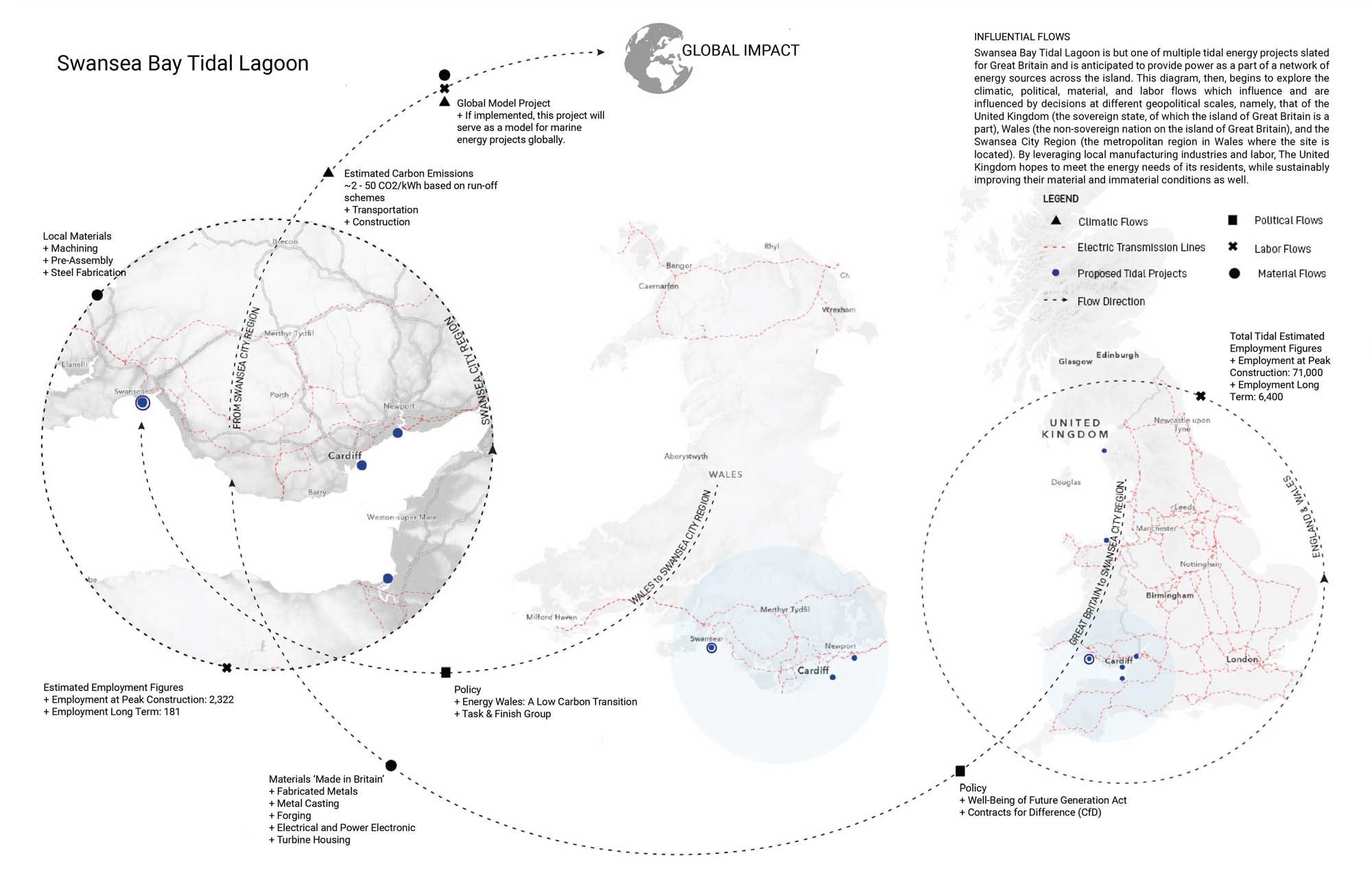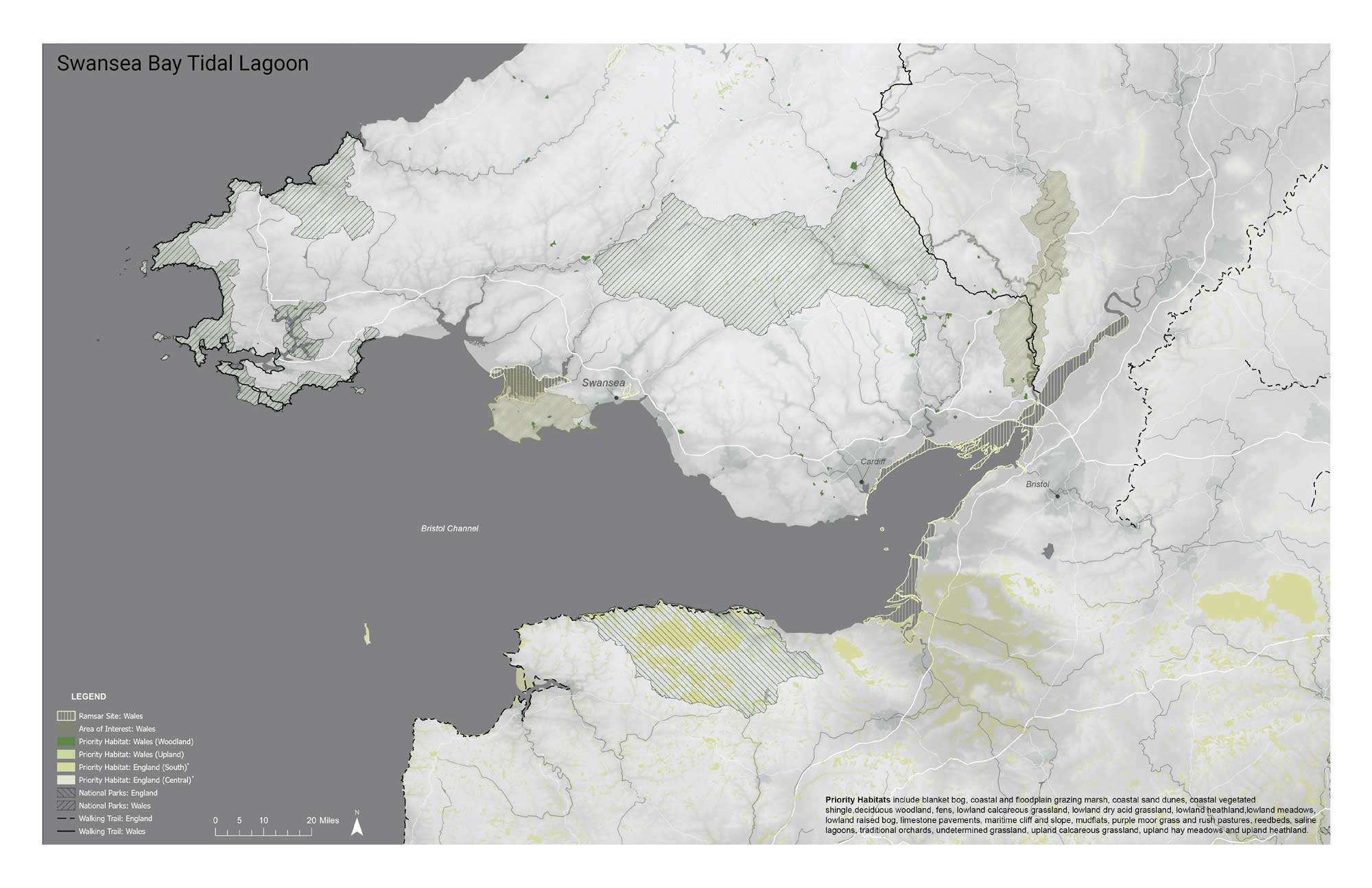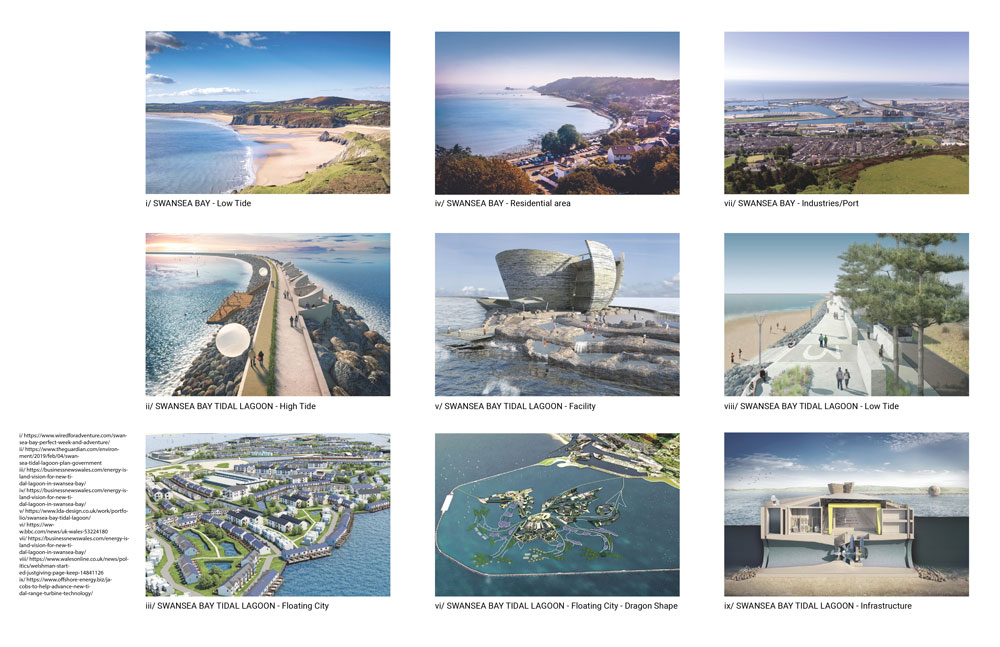Swansea Bay Lagoon

Swansea Bay Lagoon, Swansea, United Kingdom, 2015–2020. Realized/Envisioned by: LDA Design. Scale: 2347.5 acres. 44 feet above sea level. Drawing: Rocio Alonso, Muha Bazila, Kai Walcott.
Swansea Bay was once home to a thriving oyster industry that employed 600 residents in the late 1800s. Since that time, overfishing, disease, and population have wiped out the oyster trade, and the bay has been severely polluted by sewage outfalls that were closed in 1996. The Swansea Bay Tidal Lagoon is a U-shaped breakwater proposed on the southwest coast of Wales. The project would be the world’s first tidal lagoon power plant, with hydroturbines located within the breakwater that generate electricity as the tide rises and falls in the lagoon twice a day, thus generating electricity four times each day with the cycles of the tides. The project could generate electricity for 155,000 homes over 120 years if completed. Construction was expected to begin in 2020, but the United Kingdom government rejected the project due to expense. The design of the lagoon includes a walkway over the breakwater, as well as lookout points with public gathering spaces and sheltered rooms for fishing. The project uses textile geotubes to create a breakwater, filled with sand and covered with a rock barrier, with heavy rocks covering the seaward side nine feet above the high tide level. In addition to pedestrian and bike access, an electric train is proposed. A marine ecological restoration project is proposed within the lagoon, called an aquatic farm, which will include mussels, oysters, and eelgrass are proposed, in addition to a 5-mile marine reef beyond the lagoon.
Links
Adam Vaughn, “Swansea tidal lagoon plan revived – without government funding,” The Guardian, February 4, 2019.
“Swansea Bay tidal lagoon: Last-ditch bid to resurrect project,” BBC, December 4, 2019.

